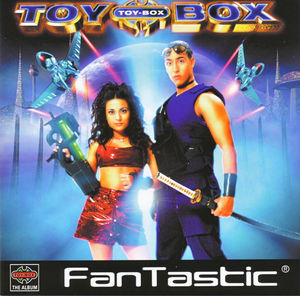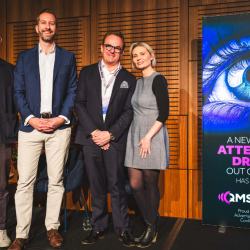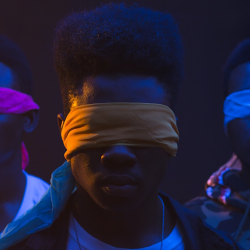Merriam Webster’s definition of an idol is ‘an object of extreme devotion’. This concept of putting something or someone on a pedestal is something I find incredibly fascinating. My first memory of idolising something is probably when I wrote an HTML fan website for Toy-box, a Danish bubblegum pop (is that even a genre?!) group 20+ years ago — please don’t judge me; they were cool, trust me!

You can say a lot about idols and their role in the world. I’m not going to deny that some of them are problematic at best, but I would still argue that they as a concept are important. They are often examples of how far we can go. They are thought leaders who have the power to shift the conversation — and often do. They are creators and innovators!
Idols come in many shapes and sizes, and they exist everywhere — in entertainment, science, business, and everything in-between. Steve Jobs was relentless in his pursuit of great products, which led to him creating what would become the most valuable company in the world. Serena Williams won 20+ Grand Slam singles titles, making is clear that she’s one of the best tennis players of all time. Greta Thunberg decided to put her foot down and turned an entire generation into climate activists. And Harry Styles keeps pushing boundaries and bending societal rules, empowering young people to be whatever version of themselves they want to be.
All these idols don’t just emerge from thin air — they are created. And this is excellent news for us as marketers because it means that we can learn and emulate them. After all, let’s be honest, we would all love for our brands to become idols.
Dissecting how something or someone becomes an idol is something we could spend many weeks on
However, I would argue it can be boiled down to doing something truly meaningful that has an impact on people and the culture in which they live. In short, to ascend to idol status, you have to create cultural value! But how?
Firstly, you need a strong foundation to build on. This comes down to your brand being excellent at its craft; have an amazing product or service that delivers true value. Once the foundation is sorted, you should shift your attention to your audience because it’s imperative that you have a good understanding of them and their world. And I’m not just talking about their functional needs — no, you need to dive deeper and uncover what they really care about and what truly matters to them. For example, Harry Styles continues to show a deep understanding of his Gen Z audience and their desire to live authentic lives, express their true selves and break out of the boxes society puts them in.
Once you have mapped out your audience’s physical and mental worlds, it’s time to look inwards and identify the spaces in these worlds where your brand has permission to show up. Through your brand’s previous actions, you have already created a set of expectations in people’s minds, which should serve as a guide as you navigate these waters — make sure your thinking starts from your brand values and behaviours and expand from there. Our friend Harry does this masterfully. He started from the core of music and expanded into other creative verticals, putting himself into the world of cinema, fashion and beyond, making himself known as not just Harry the musician, but also Harry the actor, Harry the fashionista, and… well, just Harry.
Now that you have defined the areas in which you can operate, it’s time to look for the centres of energy. These centres are the veins within culture that trigger people into action. They’re the subtle and not-so-subtle cultural movements that bring people together. They’re where differences collide. Sometimes, they’re even points of agitation. These centres of energy are what you can latch onto and leverage to spark ideas that connect with people in deep and meaningful ways. Again, Styles is a magnificent example of how this is done. In an incredibly authentic way, he takes on the cultural conversation and tension around gender neutrality, fluidity and acceptance; areas that feel like the perfect overlap of what Harry is about and what his audience deeply cares about. Harry does not just tap into this cultural energy; he enhances it, puts it in the spotlight, and gives others an opportunity to feel seen and be heard.
I believe that if you, like Harry, follow this process and consistently deliver ideas full of energy, your brand will slowly start to create meaningful cultural value, and eventually, rise to idol status in people’s minds. Just remember that it’s not going to happen overnight, but truth is, nothing worthwhile does.
Featured image: Harry Styles wallpaper / peakpx































